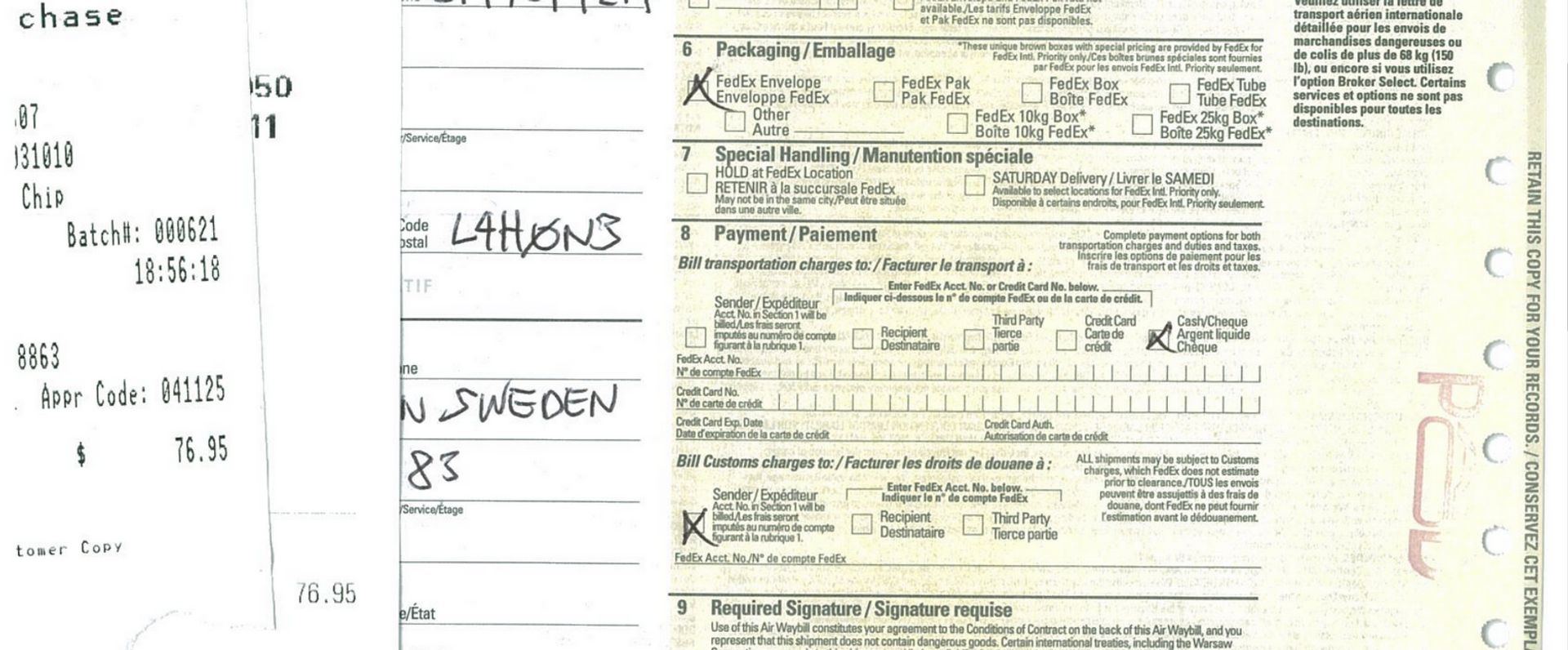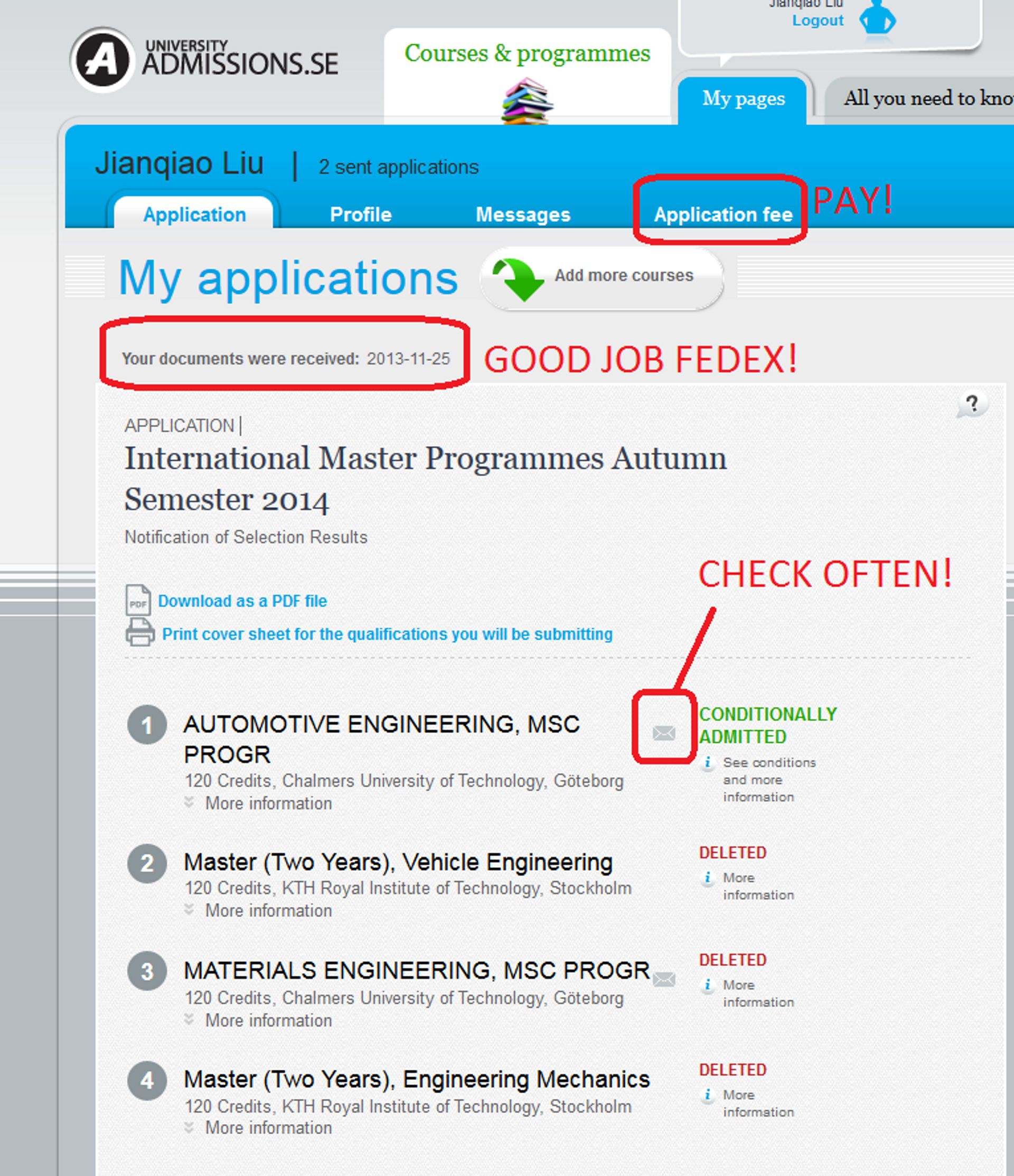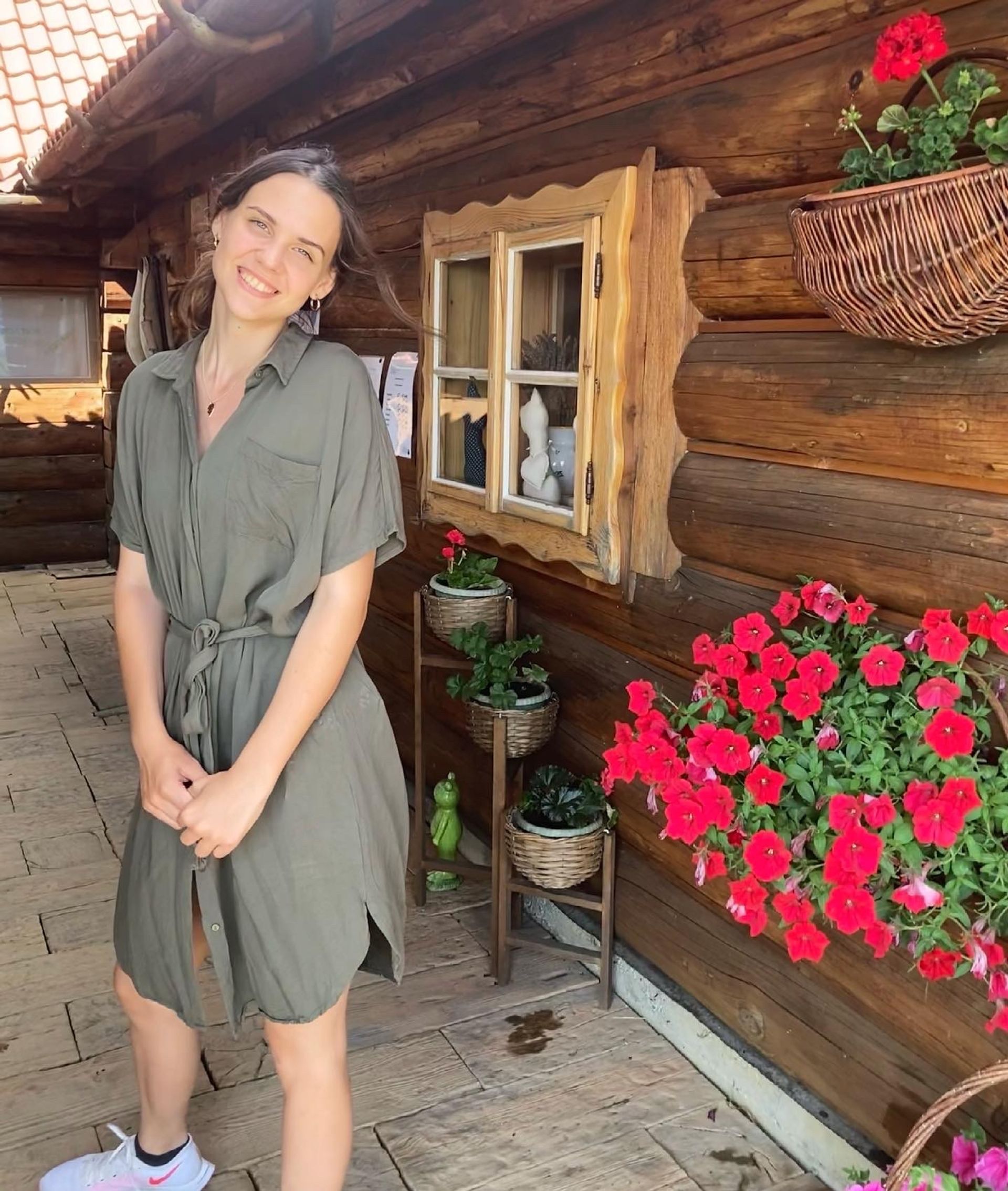
Written by Gimmy
21 Oct 2014
NB: Sorry guys, I have left StudyInSweden and hence won’t be able to answer your future questions – Gimmy 2016/09
It has been one year since I applied to school in Sweden. I want to give you a quick overview of my application process. It is easier than you think. You can do it!

I looked around and I found vehicle engineering particularly attractive. I wanted to come to Chalmers because it has a lot of close collaboration with automotive companies, such as Volvo and Scania. Application is a two part process and each part contains different steps.
Part 1: Documents
First, you gather the documents required by Chalmers. Then you organize the files and mail it to Unversity Admissions↗️, which is the website where you can apply to all courses ad programs in Sweden.

Preparing required documents was a painful process. Chalmers required many specific items that were difficult to obtain.

So go through the detailed list:

Document 1: Cover sheet (Difficulty level: 1/10)
It is found in your account in the University Admissions website↗️. When I was sending off my application at the post office, I couldn’t figure out the post code system in Sweden. It is 83873 in this case. Cover sheet looks like this:

Document 2: Certificates/diplomas from previous university studies (Difficulty level: 8/10)

This partgives you the biggest headache! I presume you are an international student. Chalmers demanded a long list of things to be stated on your transcript. My university’s official transcript lacked half of the items. So I went to the registrar’s office and asked them to write a letter containing all the demanded information. In the end, my school policy did not allow my birth date to be written on the letter… how strange.
Document 3: Transcript of records (Difficulty level: 6/10)

Chalmers wanted a syllabus “issued by the university”. I can understand why they want it. Course code “Math1” and “Calc2” does not give much information. But since my university constantly changed its syllabus, we did not have an “official syllabus” with a big “University of Waterloo” stamp on it. So I went on Google and found our syllabus online. I guess that counted as “issued by the university”.
And I wrote this in my “content page” that I submitted along with my application:

Document 4: Documentation of English language requirement (Difficulty level: 1/10)
Pretty straight forward
Document 5: Proof that you meet the specific entry requirements (Difficulty level: 6/10)
The only issue I had was the aforementioned syllabus.
Document 6: Relevant pages of your passport (or other valid ID) (Difficulty level: 1/10)
A copy of your passport: make sure it is clear. That’s about it.
You might want to double check with the school if you have dual citizenship.
Document 7: Curriculum Vitae (CV) (Difficulty level: 5/10)
I had a few internships during university. But I still went to my university’s career services to get some professional critique. It did wonders
Document 8: Project Portfolio
I did not have one.
Document 9: Letter of intent / motivation (optional) (Difficulty level: 10/10)
Although this is optional, I still highly recommend it. I think it makes your application more “human”. I wrote about why I wanted to study in Sweden. Be honest about it.
Document 10: Work experience
Optional. But it’s just a resume.
Document 11: Letter of recommendation (optional) (Difficulty level: 8/10)
Again, although it is optional I would still recommend it. It makes you more “trustworthy” in the admission judge’s eyes. Professors are very protective of their reputations. So, they will not write you a recommendation letter unless you are a good student in their eyes.
To be frank, I had difficulty finding the right references. Since I did not have many opportunities to work closely with any particular professor, I didn’t feel confident asking any of them. I ended up approaching professors with a portfolio that I prepared.
My portfolio included:
– Transcript
– Resume
– Motivational letter (item #9 comes in handy now)
– Description of the Chalmers Automotive Engineering curriculum. Professors might want to see this. So they know what you will be doing and why you are a good candidate for it.
I approached two professors, one from a materials engineering course and one from a design project course. It turned out they were very enthusiastic and encouraging towards my decision of applying to master’s degree. So, I guess participating in class and being interested in the subject helps.
Document 12: Certificate of cumulative average grade (optional)
I didn’t have this because I was still completing the final year of my bachelor studies.
Document 13: Check list (optional)
I like checklists. I think all engineers like checklists.
On top of the check list that was provided by Chalmers, I also made my personal “content sheet”. I thought this will make things more organized. I also included a page number on the bottom to keep things in order.

Part 2: Print, submitt and update!
University Admission↗️ will be your best friend, because it gives you general information about the applications process↗️. On this website, you will:
- Print your cover page (the first page of your application package)
- If your submitted documents have been received
- Any new messages (check frequently for messages)
- Updates on application process
- Pay application fee (if you are from outside of EU/EEA)

Part 3: What happens next?
Pretty soon Chalmers asked me to fill out this “Specific course requirement portal” questionnaire. It will ask you which courses have you taken during your undergrad studies that fulfills specific areas of learning. It looks like this:


Now you have worked hard during your undergrad years, and you prepared a strong application. Just wait for a few months, stay positive and good news will come.

Don’t forget to save the PDF of “Notification of Selection”. I forgot to save it and it is not accessible when the second round of selection process is running. I got a little nervous, since I needed it for applying for the Swedish study permit (residence permit). Don’t sweat if you did forget, because it came back two days later.
Final comments
Preparing the entire application took some work. It will take some more time to make it shine. So start early! Good luck!
Löv,
Gimmy





